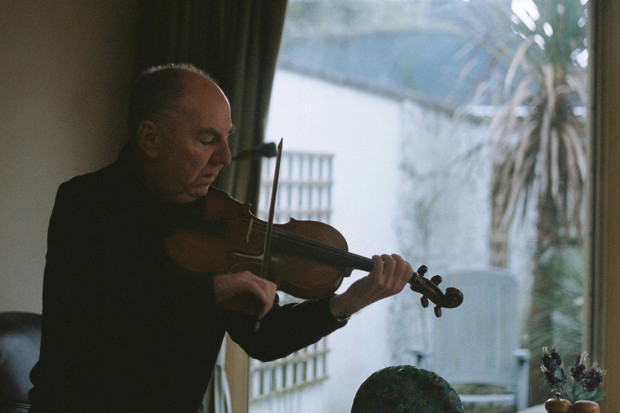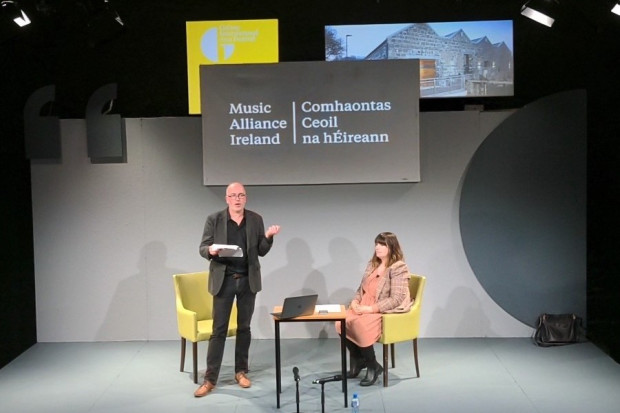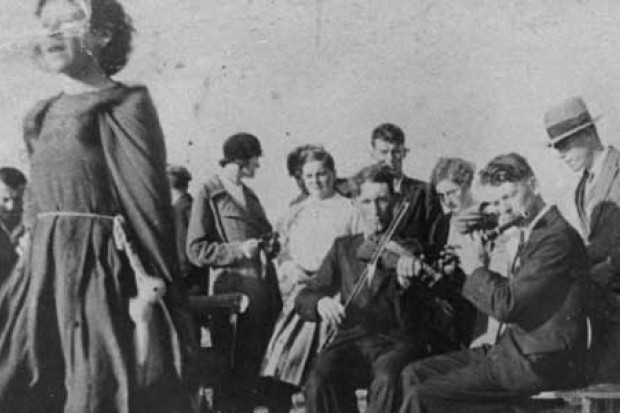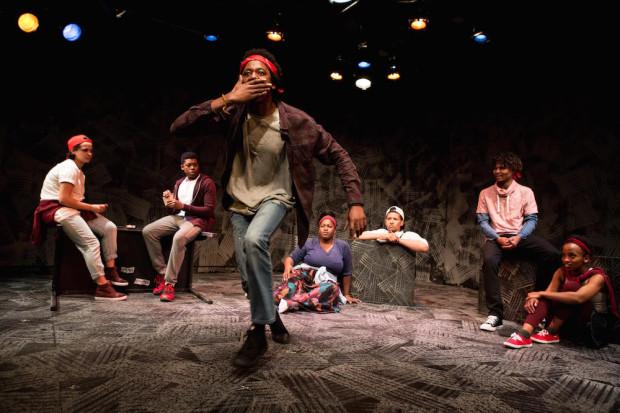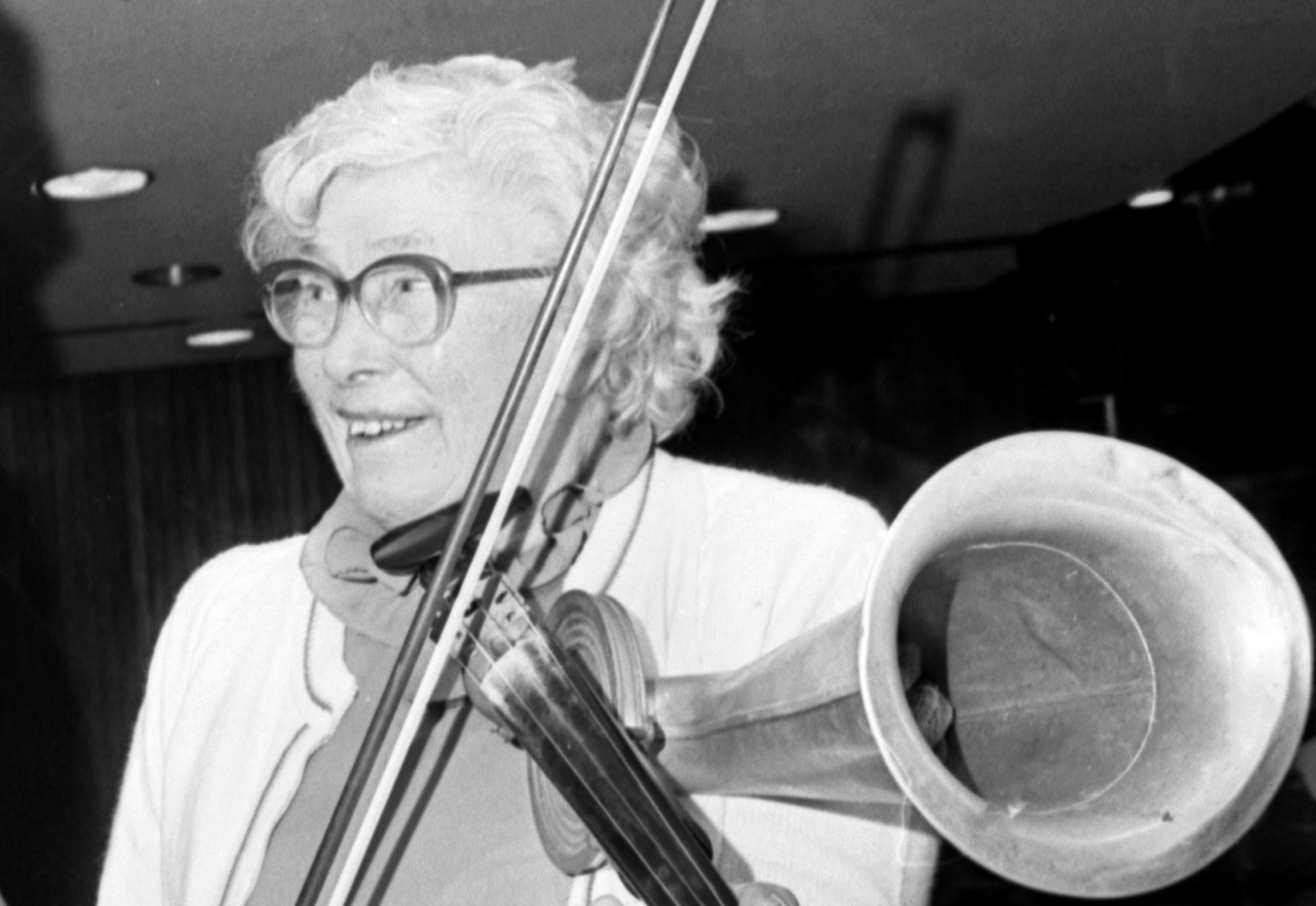
Julia Clifford playing the Stroh fiddle – Clifford is one of the subjects of Tes Slominski's new book. (Photo: Irish Examiner)
Is It Time to Separate Irish Traditional Music from Irishness?
In the introduction to Trad Nation: Gender, Sexuality, and Race in Irish Traditional Music, Tes Slominski states the book’s two primary aims: to ‘introduce musicians and topics that have not been discussed widely – or at all – in the existing literature on Irish traditional music’ and to present an argument for ‘the separation of Irish traditional music from ethnic nationalism’ (pp. 4–5). Slominski argues that the forces of nationalism create exclusions in society and her book traces both past and present inequalities in Irish traditional music, in Ireland and the USA, through exploring the stories of key women musicians. Adopting a decidedly activist tone, Trad Nation examines the ways in which social norms influence music and music history and argues for the separation of ‘sounds and social practices from ethnicity’ (p. 5) The book is timely in its publication, a welcome addition to the growing number of voices for change in music in Ireland (and internationally).
Slominski combines her experience as fiddle-player and researcher, giving both insider and outsider perspectives. Her goal is to find new ways of understanding music making and identity while presenting the stories of ‘women; lesbian, gay, bisexual, transgender, and queer (LGBTQ+) musicians; and musicians of color in Irish traditional music’ (p. 3). She links her biography to a discussion on ethnicity and subsequently racism, questioning the efficacy of the term ‘Irish’ in Irish traditional music when considering a postnational music scene: ‘… when musicians with no Irish ethnic heritage refer to themselves as “Irish traditional musicians,” does “Irish” apply to the music or the person? This slippage provides an excellent opportunity to question the relevance of ethnic nationalism to musiking and, by extension, to individual and group identity formation’. (p. 16) The author describes her methodology as a combination of ethnography, critical theory and historiography.
Gender expectations
Chapters one, two and three share similar approaches, each concentrating on women in Irish music. In chapter one, Slominski describes dominant ideologies of nation and womanhood in the early years of independence. She explores the prevailing gender expectations and their relationship to nation and nation-building activities, including allegorical song and songs idealising ‘Mother Ireland’. ‘Except for a few women who engaged in military action, Mother Ireland’s nationalist daughters contributed to the cause through private familial action and domestically inflected public activism’ (p. 39). She addresses the historic reasons for a lack of women musicians in the written and oral histories of Irish traditional music – women could sing and play within the home but rarely in a public space (p. 42). The second half of this chapter considers some key women musicians, ‘The Queen of Irish Fiddlers, Bridget Kenny’, Mollie Morrissey, Mary Kilcar and Lucy Farr and how they responded to or negotiated gender norms and stereotypes. Trad Nation reinvigorates the memory of these women, locating them in the historical narrative of Irish music while also questioning why they were previously excluded from the literature and collective memory.
Ideas of class, gender and musical style in early twentieth-century Ireland frame a detailed discussion of Treasa Ní Alpín (Teresa Halpin). Limerick-born Ní Alpín (1894–1983) was a fiddle-player and dancer. In her teens she competed (and won) against Michael Coleman. She was awarded a Feis Ceoil prize for unpublished airs and in 1923 published a tutor book for the violin, Teagosc-Leabhar na Bheidhlíne. She recorded on a 78RPM for Parlophone in 1929 and is also credited with composing dances such as ‘The Walls of Limerick’ yet her name is not as readily recognised as many of her male contemporaries. Ní Alpín’s story is fascinating and as a musician and dancer her impact has resonated through history to the present day.
The importance of Clifford
Julia Clifford is perhaps the most well-known musician in the book. Using detailed, theorised and contextualised biography Slominski’s narrative of Clifford provides an excellent model for other writers. Her biography of this important musician is set against changing ideologies of ‘woman’, ‘musician’ and ‘session’. In relation to musical analysis, Slominksi also argues that ‘transcribing Irish tunes as a way of describing performance is an exercise in folly, however handy “the dots” are for learning or remembering basic melodies’ (p. 122). While prescriptive transcriptions (‘bones’ of a tune) are useful in educational contexts such as tune-book publications there is scope and space in this book to delve deeper into descriptive transcription (full ornamentation and articulation) methodologies. Notwithstanding this minor note on transcription, her analysis is helpful to give a sense of the type of performer Clifford was.
Slominski fuses a micro focus on Clifford to realise macro issues of who (the individual) and what (social position) in Irish music and biography. In doing this we get a full sense of Clifford as an individual, her life in Ireland and England, and her professional and musical lives. Clifford emerges as a strong character both personally and musically. Slominski uses the example of Clifford’s active musical participation to show ways in which inequalities of recognition and treatment of women musicians prevail, and she cautions on the danger of gender erasure where issues of gender are dismissed in the presumed ‘sexless’ space of the Irish music session.
Critique
The second half of the book moves to a critique of the contemporary postnational traditional music scene in Ireland and the USA. Here Slominski shifts her focus to the affective experience of traditional music performance. She draws on Mihaly Csikszentmihalyi’s ideas of ‘flow’ and positive psychology – both in terms of the potential for achieving a flow state in music and considering how that flow state can be obscured and withheld for non-normative musicians: ‘For women musicians, LGBTQ+ musicians, and musicians of color, however, the potential for craic-destroying and flow-preventing interactions because of sexism, heterosexism, and racism is ever present’. (p. 143) Here Slominski asserts that those musicians (women, LGBTQ+ and musicians of colour) must often contend with ‘flow-preventing’ comments/actions in a more direct and frequent way than their white/male/heterosexual counterparts. This argument is supported by her research with traditional musicians in the USA and Ireland. Accounts from her research are presented giving first-hand explanations and details of how musicians felt that their musical experience was overshadowed by comments/viewpoints from other musicians and audience members that diminished and degraded them.
Slominski’s narrative might well make for uncomfortable reading for some: she gives detailed ethnographic data of all too commonly experienced sexual harassment of women musicians that separately has also come to light through the #MiseFosta campaign. For example: ‘I have many #metoo [stories] for Ireland alone, you know, including someone literally sticking their hand down my ass … while I was playing a tune’ (p. 146). Anti-trans narratives are also reported. It may be tempting for readers to distance themselves from these harsh realities but silence on the issues of homophobia, sexual harassment, misogyny and racism breed reproduction of harmful and outdated ideas of who we (Irish) are as a nation. In this chapter Slominski revisits the theories and applications of identity, identification and disidentification. Drawing again on her fieldwork, she presents accounts of experiences of racism in traditional Irish music contexts. The conclusion, ‘Forward’, expresses, however, positive hope for the future. Slominski calls all to action: to acknowledge, address and refute exclusions of gender, ethnicity or race wherever they occur.
Trad Nation brings together new perspectives on historic and contemporary music-making in Irish traditional music. A discernible clarity of thought and insight permeates the writing that traces an historical line of women musicians in the twentieth century. However, Slominski’s argument would be enhanced by further expansive fieldwork examples, particularly in Ireland, to critically examine the nuance of her argument from multiple voices. I say this for two reasons: firstly, accounts from her interviews derive from a relatively small number of interviewees from Ireland and so a possible unintentional distance may be created. The acts of intolerance and injustice in the USA could be read as geographically distant and therefore not fully applying to music in Ireland. Second, little attention is given to highlighting some of the very progressive attitudes of many traditional musicians in Ireland today who have, at great personal effort and cost, staged campaigns against many injustices. This balance would, I believe, further support Slominski’s hypothesis and her positive view of the genre and demonstrate the fertile ground that has been laid for a ‘new and better’ traditional Irish music.
Slominski’s use of the shorthand term ‘traddie’ in the book is also worth reconsidering: it is not a commonly employed term by musicians in Ireland and could be interpreted as denigrating or trivialising the art form.
Some books on Irish traditional music find an immediate and permanent place in the literature because of their fresh stance or detailed approach to music history and style. This book is not just a history of women in Irish traditional music nor a description of musical style or performances. It goes beyond music as sound and takes traditional music as a way of looking at society and culture through the lenses of gender, sexuality and race studies. Because of this approach it is a must-read for scholars of Irish traditional music, cultural studies and music in Ireland. Trad Nation by Tes Slominski is a thought-provoking, assertive and powerful call to action to address, challenge and transcend discrimination based on gender, sexuality and race in Irish traditional music. The title might suggest an inward gaze to music in Ireland but this is not the case. The ‘nation’ she speaks of in the conclusion is one of tolerance and mutual communal benefit across national and geographic boundaries.
Trad Nation: Gender, Sexuality, and Race in Irish Traditional Music by Tes Slominski is published by Wesleyan University Press. Visit https://www.hfsbooks.com/books/trad-nation-slominski/
Published on 26 November 2020
Helen Lawlor is a lecturer in music at Dundalk Institute of Technology and the author of Irish Harping – 1900–2010.











